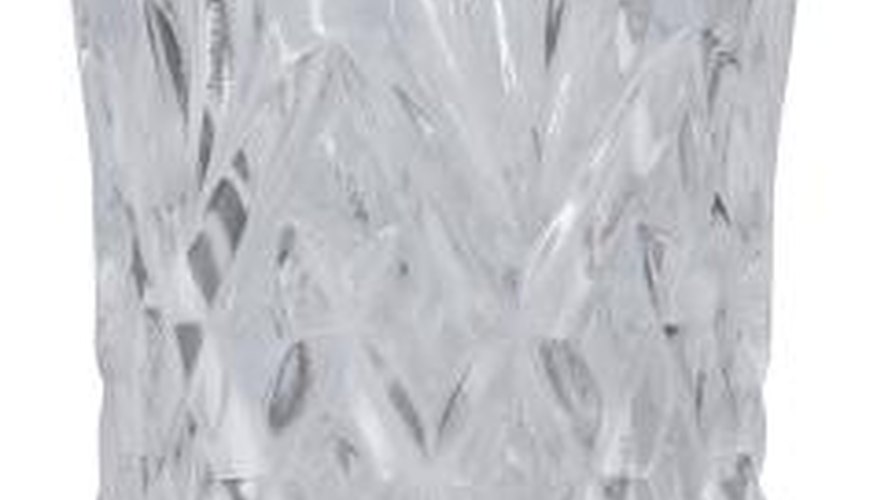If you are a crystal collector, there is a scenario you may commonly encounter: You are in an antique store or at an estate sale and see a crystal vase but don't know anything about it. You decide to buy the piece. Did you pay too much or get a bargain? It takes research to discover the answer. First, find out as much as possible about the condition, maker and pattern of your vase. Then, use that information to determine the value of the piece.
Check the condition of the vase. Unless your piece is truly rare, any flaws will adversely influence its value. Collectors want pieces in pristine condition. Examine the vase carefully for any defects. Is the glass cloudy or does it have water stains? Are there scratches on the vase? Run your fingers over every inch to check for chips. The small ones are referred to as "flea bites." Most importantly, look for cracks. A crack lowers the value much more than any other flaws.
- If you are a crystal collector, there is a scenario you may commonly encounter: You are in an antique store or at an estate sale and see a crystal vase but don't know anything about it.
- Run your fingers over every inch to check for chips.
Identify the maker of the vase. Look for a maker's mark to indicate who manufactured the piece. Most marks are on the bottom of the vase. Many makers use an acid-etched signature or a symbol. Some marks are hard to see, especially if the vase is worn on the underside or has an elaborately-cut bottom. Examine the piece in strong light with a magnifying glass.
Determine the pattern name. Once you have identified the maker of your piece, determine the name of the pattern. If the manufacturer is still in business, contact the company for identification aide. Call or e-mail their customer service centre to find out if they can help and what information they need about your piece. More pattern identification help can be found through a crystal replacement service such as Replacements, Ltd. This company offers to identify the maker and pattern of decorative crystal once you e-mail, fax, or mail them pictures of the piece.
- Identify the maker of the vase.
- More pattern identification help can be found through a crystal replacement service such as Replacements, Ltd.
- This company offers to identify the maker and pattern of decorative crystal once you e-mail, fax, or mail them pictures of the piece.
Look for value guides. Go to your local library or bookstore to find collectors' value guides. If you have been able to determine the maker of your vase, look for a book geared specifically to that maker. If there isn't one, use a general price guide such as "Warman's Antiques & Collectibles Price Guide" by Mark F. Moran or "Kovels' Antiques & Collectibles Price Guide" by Terry Kovel and Kim Kovel.
- Go to your local library or bookstore to find collectors' value guides.
- If there isn't one, use a general price guide such as "Warman's Antiques & Collectibles Price Guide" by Mark F. Moran or "Kovels' Antiques & Collectibles Price Guide" by Terry Kovel and Kim Kovel.
Check the marketplace. Any collectable is worth only as much as someone is willing to pay. Using the maker information, pattern information or both, do a search for your vase on a web site such as eBay. Look at the completed auction results to find out what people have paid. Read the description to see if the vase was in comparable condition to yours. You must set up a free account in order to access this information. Another source of marketplace information is the web site WorthPoint. This subscription service shows realised prices for collectibles sold at auctions and online antique stores.
